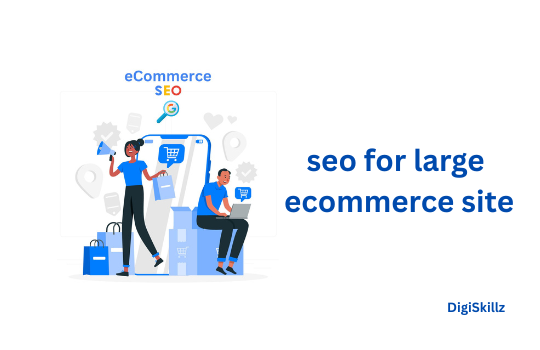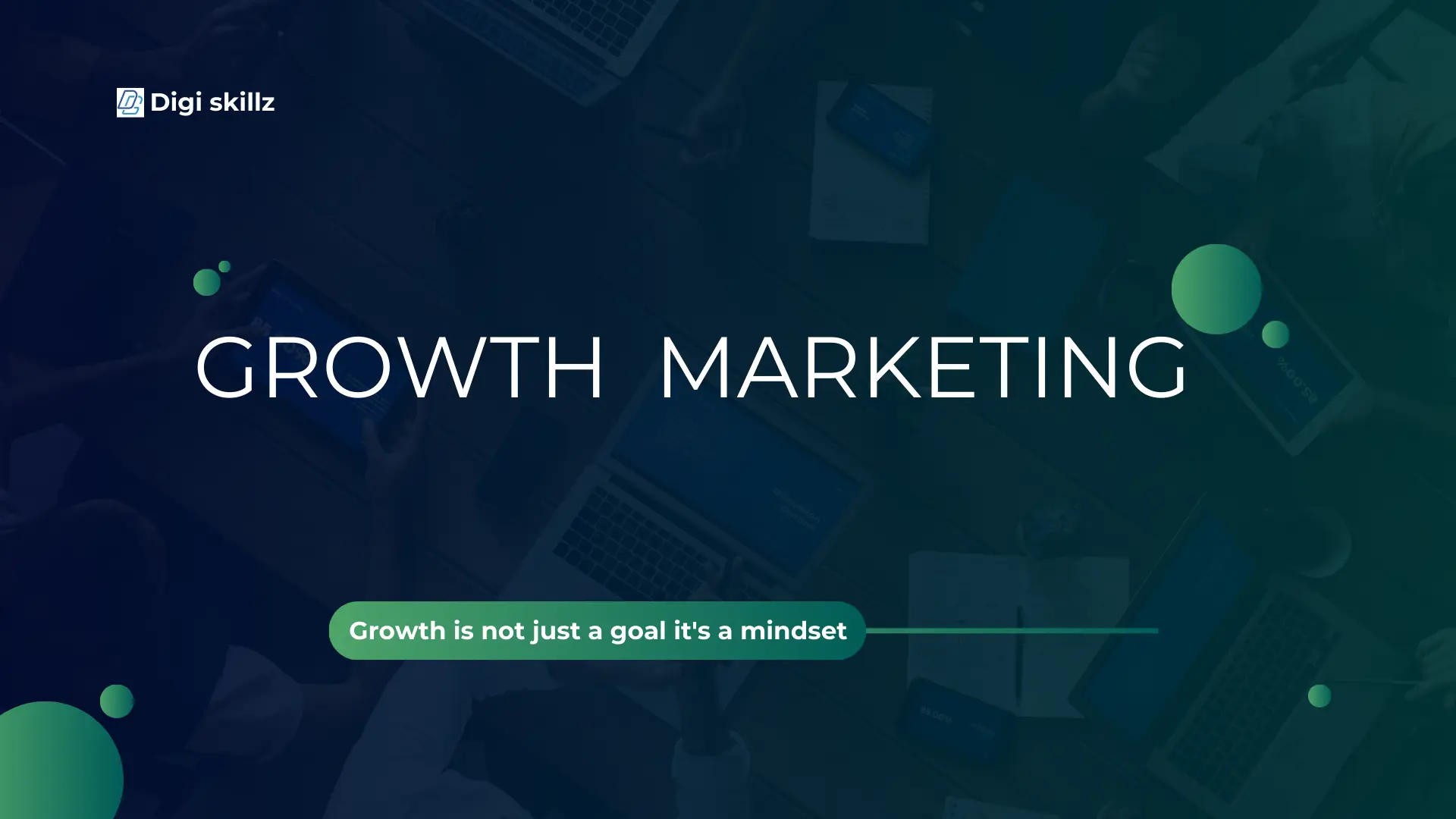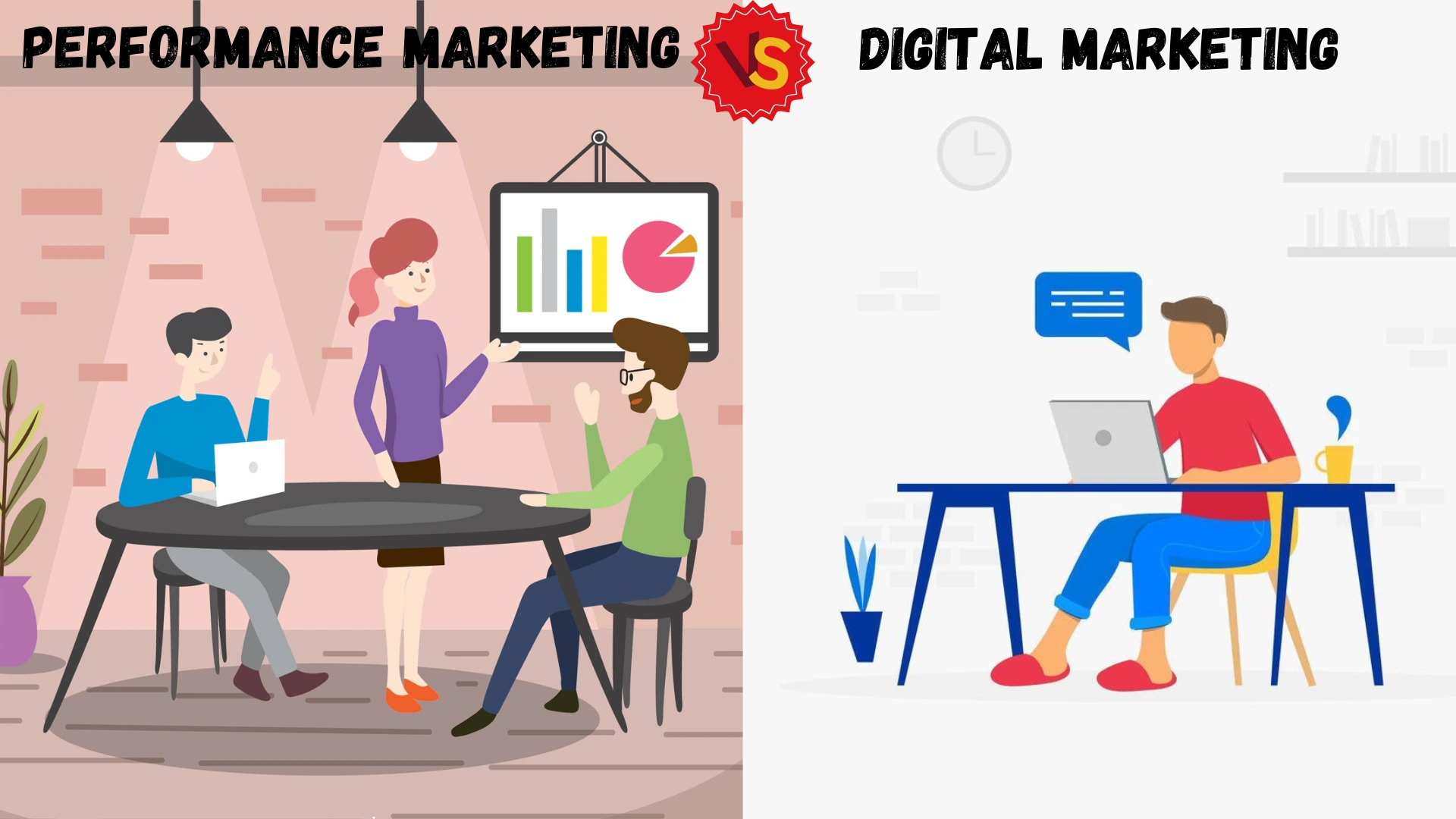In today’s fast-paced digital landscape, the way we market and advertise our products and services has undergone a transformative shift. The emergence of the internet and the proliferation of smart devices have not only changed the way we communicate but also revolutionized the world of marketing and advertising. Digital Marketing and Advertising are no longer confined to traditional media channels; they have transcended into a dynamic realm where creativity, technology, and data converge to create innovative strategies that resonate with modern consumers.
In this comprehensive blog post, we will explore the dynamic realm of Digital Marketing and Advertising, focusing on strategies and trends that have become essential in the modern world. We’ll delve into the power of social media advertising, search engine optimization (SEO), content marketing, influencer collaborations, and the ever-evolving landscape of data analytics. Moreover, we’ll examine how businesses are adapting to these changes and leveraging cutting-edge technologies like artificial intelligence and augmented reality to enhance their marketing efforts. So, buckle up as we embark on a journey through the exciting world of Digital Marketing and Advertising in the 21st century.
Table of Contents
1. The Evolution of Marketing
From Traditional to Digital (Digital Marketing and Advertising)
Marketing and advertising were once predominantly associated with traditional media such as print, TV, and radio. However, the rise of digital platforms has reshaped the marketing landscape, leading to a profound transformation in how businesses promote their products and services. This paradigm shift, driven by Digital Marketing and Advertising, has not only altered the marketing terrain but has also revolutionized the very essence of how we connect with our target audiences.
In the pre-digital era, reaching a broad audience involved significant costs and logistical challenges. Television advertisements required large budgets and intricate media planning, while geographical limitations constrained print ads. Radio ads, on the other hand, were contingent on time slots and the popularity of specific stations. However, with the advent of Digital Marketing and Advertising, these constraints have largely dissipated. Now, businesses can harness the power of the internet and social media to reach a global audience with unprecedented ease and efficiency.
2. Digital Marketing Strategies
Search Engine Optimization (SEO)
Digital Marketing and Advertising encompass a multitude of strategies, and among the fundamental pillars in this realm is Search Engine Optimization (SEO).SEO plays a pivotal role in the digital landscape, serving as the cornerstone for businesses looking to establish a prominent online presence. By optimizing your website for search engines like Google, you take a significant step toward ensuring that your business appears in relevant search results, making it discoverable to your target audience.
The world of SEO is continuously evolving, reflecting the ever-changing dynamics of the digital ecosystem. Search engines continually update their algorithms to provide the best possible user experience, making it imperative for businesses to adapt their SEO strategies accordingly. Staying ahead in the field of SEO means staying up to date with these algorithm changes and adhering to best practices. Techniques that may have worked in the past, such as keyword stuffing and link spamming, are now penalized by search engines.
Incorporating a well-planned digital marketing strategy can significantly boost your online presence and drive substantial traffic to your website. By utilizing targeted social media campaigns, search engine optimization (SEO), and engaging content, your business can thrive in the digital landscape, reaching a wider audience and increasing your conversion rates.
3. Content Marketing
In the realm of Digital Marketing and Advertising, Content Marketing emerges as a formidable strategy, where the adage “content is king” holds more truth than ever before. Crafting high-quality and valuable content is not merely a choice but a fundamental necessity for businesses aiming to succeed in the competitive digital arena. The ability to engage your audience and establish your brand as an industry authority hinges on the content you produce. Whether it takes the form of blog posts, videos, podcasts, or social media updates, content marketing serves as a linchpin in building a loyal customer base and fostering enduring customer relationships.
In today’s content-saturated digital landscape, the challenge lies in creating standout content that rises above the noise. Your content must not only be informative but also inherently engaging, providing real value to your target audience. In a world awash with information, it’s the content that resonates and adds value that truly stands out. Understanding your audience’s pain points and aspirations is crucial, allowing you to tailor your content to their specific needs.
4. Social Media Marketing

In the vast landscape of Digital Marketing and Advertising, Social Media Marketing has emerged as a powerhouse, continuously gaining influence and relevance. The dynamic nature of social media platforms like Facebook, Instagram, Twitter, and many others has created unprecedented opportunities for businesses to forge more personal connections with their audience. Social media marketing allows for real-time engagement, authentic conversations, and the cultivation of brand loyalty. However, the ever-growing number of social media platforms and the diversity of audiences they attract can be daunting for businesses. To excel in the realm of social media marketing, it is imperative to pinpoint the platforms where your specific target audience is most active.
Different platforms cater to different demographics and interests. For instance, Instagram tends to be popular among younger users, making it an ideal choice for businesses looking to connect with this demographic. In contrast, LinkedIn often serves as a go-to platform for B2B marketing, offering a professional environment conducive to networking and business-related conversations.
5. Pay-Per-Click Advertising (PPC)
Within the realm of Digital Marketing and Advertising, Pay-Per-Click Advertising (PPC) stands as a highly targeted and results-driven strategy. Platforms like Google Ads have revolutionized the way businesses connect with potential customers.PPC advertising offers a precise approach by allowing you to bid on specific keywords, ensuring that your advertisements are displayed to users who are actively searching for products or services similar to what your business offers.
The effectiveness of PPC campaigns hinges on several key factors. First and foremost, thorough keyword research is vital. Identifying the right keywords that align with your business and customer intent is the foundation of a successful PPC campaign. Alongside this, creating compelling ad copy that not only captures attention but also resonates with your target audience is essential. Your ad copy should convey the unique value your business provides. Equally important is the optimization of landing pages. These pages must be well-structured, user-friendly, and relevant to the ad content to ensure a seamless transition for visitors and maximize conversion rates.
6. The Importance of Analytics
In the dynamic realm of Digital Marketing and Advertising, analytics plays a pivotal role, offering businesses an invaluable advantage. The ability to measure and analyze the performance of your campaigns is one of the defining benefits of digital marketing. Metrics such as website traffic, conversion rates, click-through rates, and engagement levels provide real-time insights that can guide your strategies and ultimately lead to more successful outcomes.
To harness the full potential of analytics, it’s crucial to begin with a clear and defined set of goals for your marketing campaigns. For example, if you’re running a Pay-Per-Click (PPC) campaign, your goal might be to increase online sales by a certain percentage or achieve a specific click-through rate. By setting measurable objectives, you can accurately gauge the effectiveness of your campaigns and make data-driven decisions to improve performance. Analytics empowers you to identify what’s working, what isn’t, and where adjustments are needed.
7. The Mobile Revolution
The Mobile Revolution has indisputably reshaped the landscape of Digital Marketing and Advertising. In today’s digital age, with the majority of internet traffic originating from mobile devices, optimizing your marketing efforts for mobile users has transitioned from being a choice to an absolute necessity. This transformation has necessitated the adoption of responsive web design, the development of mobile apps, and the creation of mobile-specific ad campaigns, all of which are essential for reaching and engaging the modern consumer.
The proliferation of smartphones, in particular, has led to a profound shift in consumer behavior. People now rely on their mobile devices for a wide range of activities, from shopping and social networking to research and entertainment. This shift has profound implications for digital marketing strategies. Mobile optimization is no longer a matter of mere convenience; it’s a fundamental business requirement. Ignoring the mobile audience means missing out on a significant portion of potential customers.
8. Staying Ahead of Trends

In the ever-shifting landscape of Digital Marketing and Advertising, staying ahead of the curve is essential for maintaining a competitive edge in the modern world. The dynamic nature of digital marketing means that businesses need to continuously adapt and innovate their strategies to keep up with changing consumer preferences and technological advancements. Voice search optimization is one such trend that has gained prominence in recent years. With the increasing prevalence of voice-activated devices like smart speakers and virtual assistants, businesses must optimize their digital content for voice search.
Understanding the nuances of how people conduct voice searches and tailoring your content to match those natural language queries can significantly enhance your visibility in voice search results. Video marketing is another trend that has become a powerhouse in the digital marketing landscape. With platforms like YouTube, TikTok, and Instagram’s IGTV gaining immense popularity, video content has become a vital means of engaging and connecting with audiences. Incorporating video into your marketing strategy, whether through product demos, how-to guides, or storytelling, can captivate your audience and set your brand apart.
9. Voice Search Optimization
The ascent of voice-activated devices such as Amazon Echo and Google Home has ushered in a new era of digital interaction, marked by the growing prevalence of voice searches. Voice Search Optimization is swiftly becoming an imperative consideration for businesses in the digital marketing and advertising landscape. To leverage the potential of voice search, it’s crucial to adapt your digital content to align with the way people naturally converse with these devices.
Voice Search Optimization entails a fundamental shift in keyword strategies. To meet this demand, using natural language keywords that reflect how people speak is paramount. Long-tail keywords and phrases that resemble real-life conversations are increasingly crucial in the voice search realm. Additionally, optimizing your content for local searches is vital, as many voice searches have a local intent, such as asking for nearby restaurants or services. Furthermore, providing concise, informative answers to common questions that your audience might ask through voice commands is vital. This means crafting content that directly addresses user queries in a clear and concise manner.
Offering valuable and immediate responses can enhance your visibility in voice search results and foster user satisfaction.
10. Video Marketing

Video marketing has indeed experienced a meteoric rise in popularity, ushering in a transformative era in the realm of digital marketing and advertising. The proliferation of platforms such as YouTube, TikTok, and various social media sites has created a fertile ground for the dissemination of video content, reshaping consumer preferences and behavior. In this ever-evolving landscape, the role of video in Digital Marketing and Advertising cannot be overstated. One of its most distinguishing features is its unparalleled capacity to captivate and engage audiences in ways that no other medium can.
The versatility of video content is one of its standout attributes, as it offers a wide range of formats to choose from. These formats can include product demonstrations, how-to guides, storytelling, testimonials, and more. This versatility empowers businesses to connect with their audiences in diverse and meaningful ways, offering both value and entertainment while effectively conveying their brand’s identity and message.
Product demonstrations are a powerful tool in the video marketing arsenal. They allow businesses to showcase their products or services in action, highlighting their features and benefits. This format provides potential customers with a tangible understanding of what they can expect, building trust and confidence in the brand. It also serves as an educational tool, making complex products or services more accessible and user-friendly.
How-to guides are another compelling video format. They offer step-by-step instructions on various topics, addressing the pain points and challenges faced by the target audience. By providing valuable solutions and expertise, businesses position themselves as industry leaders and build a loyal following of viewers seeking their guidance. Storytelling is an art that video marketing has mastered. Stories have a unique ability to resonate with viewers on an emotional level, making the brand’s message memorable and relatable. By crafting narratives that align with their values and vision, businesses can forge deeper connections with their audience, leading to increased loyalty and advocacy.
Testimonials are a powerful form of social proof in video marketing. They feature satisfied customers sharing their positive experiences with the product or service. These authentic endorsements instill trust and confidence in potential customers, making them more likely to make a purchase. Video marketing’s impact goes beyond just the content itself. It also offers valuable insights through metrics like engagement rates, click-through rates, and viewer demographics. This data enables businesses to fine-tune their strategies, ensuring that their content reaches the right audience and drives desired actions.
The rise of video marketing has reshaped the digital marketing landscape, offering a dynamic and versatile tool for businesses to connect with their audiences in engaging and meaningful ways. Whether through product demonstrations, how-to guides, storytelling, or testimonials, video content empowers brands to convey their identity and message while providing value and entertainment. As the digital marketing landscape continues to evolve, video remains a cornerstone in capturing the hearts and minds of consumers.
11. Influencer Marketing
Influencer Marketing has emerged as a potent and influential strategy within Digital Marketing and Advertising. With the rise of social media platforms, particularly Instagram, influencer marketing has become a transformative means of connecting with audiences in a highly personalized and engaging way. Partnering with influencers in your niche can be a game-changer, enabling your brand to access a more engaged and laser-focused audience.
One of the distinguishing features of influencer marketing is the authenticity and trust that influencers have cultivated with their followers. Influencers often have a dedicated and loyal fan base who respect and trust their recommendations. When influencers endorse your products or services, they carry a genuine and persuasive voice. This personal touch can significantly impact purchasing decisions and lead to increased brand visibility, credibility, and, ultimately, conversions.
Influencer Marketing has emerged as a potent and influential strategy within Digital Marketing and Advertising. With the rise of social media platforms, particularly Instagram, influencer marketing has become a transformative means of connecting with audiences in a highly personalized and engaging way. Partnering with influencers in your niche can be a game-changer, enabling your brand to access a more engaged and laser-focused audience.
One of the distinguishing features of influencer marketing is the authenticity and trust that influencers have cultivated with their followers. Influencers often have a dedicated and loyal fan base who respect and trust their recommendations.
When influencers endorse your products or services, they carry a genuine and persuasive voice. This personal touch can significantly impact purchasing decisions and lead to increased brand visibility, credibility, and, ultimately, conversions.
12. Conclusion

Digital marketing and advertising have become the lifeblood of businesses in the modern world. To succeed, it’s crucial to adapt to the ever-changing digital landscape, employ effective strategies, and stay informed about emerging trends. By doing so, you can harness the power of digital marketing and advertising to reach and engage your target audience in innovative ways. In this blog post, we’ve delved deep into the vast and dynamic world of digital marketing and advertising.
To thrive in this fast-paced environment, it’s essential to stay informed, embrace change, and continuously refine your strategies. By doing so, you can remain competitive and make the most of the incredible opportunities that the modern digital landscape provides. It’s important to stay ahead of the curve and invest in the latest technologies and trends. Additionally, it’s important to stay ahead of the competition by constantly learning and adapting to new changes.
Finally, it’s important to stay agile and be able to adjust quickly and pivot when the need arises. It’s also important to stay ahead of the competition by implementing efficient strategies. Networking and building relationships with industry peers can also be beneficial in helping you stay competitive.
Finally, staying ahead of the competition requires staying informed and up-to-date on the latest trends and technologies. You should regularly review your strategies and results to assess their effectiveness. Additionally, you should strive to create innovative solutions to business problems that can help you stay ahead of the competition. Finally, it’s important to be open to change and be willing to take risks. Experimenting with new ideas and taking risks can be a great way to stay ahead of the competition. It’s important to stay flexible and adaptable as the market evolves and new opportunities arise. Finally, it’s important to stay humble and open to feedback from colleagues, customers, and stakeholders.











Leave A Comment